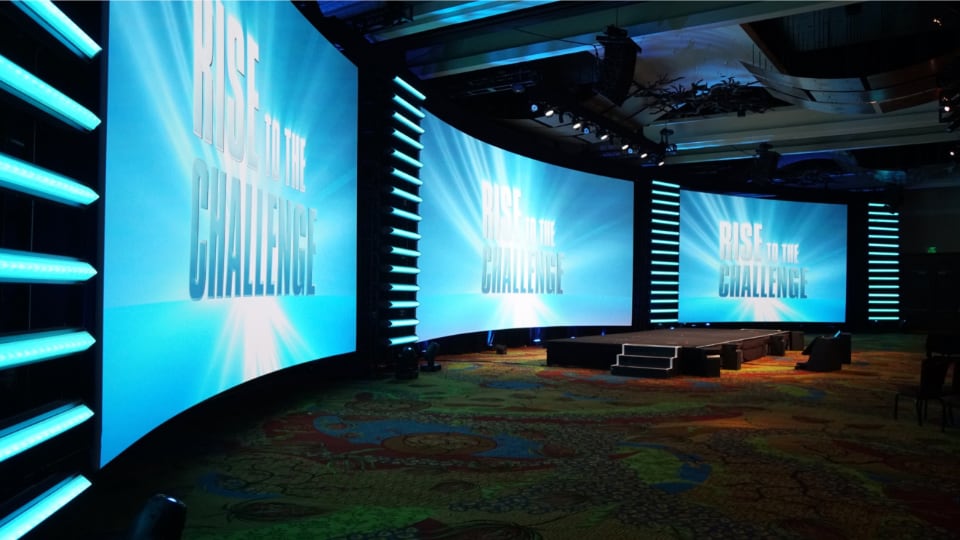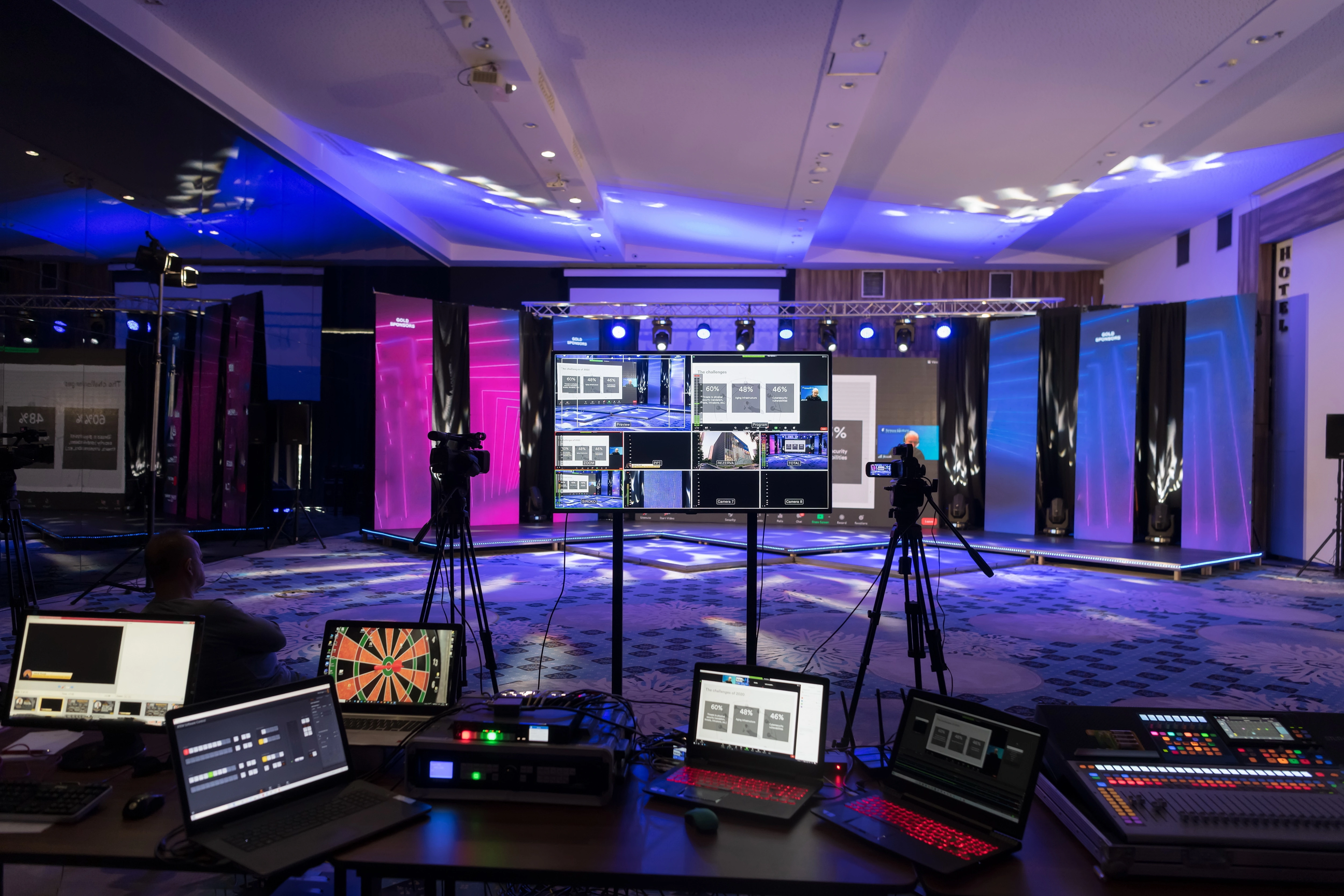Increase Viewers Interaction with Live Event Audio Visual Production Methods
Increase Viewers Interaction with Live Event Audio Visual Production Methods
Blog Article
Understanding the Process of Live Event Audio Visual Production
The ins and outs of online event audio aesthetic manufacturing demand a blend of technological competence and critical preparation. As we check out the important parts that add to a successful event, it becomes apparent that the foundation lies in both prep work and versatility.
The Value of Planning
Reliable preparation is necessary for the success of any live event audio aesthetic production. A well-structured strategy serves as the foundation, assisting every element of the occasion from conception to implementation.
Furthermore, careful scheduling is essential. A thorough timeline that includes target dates for every phase of manufacturing helps to mitigate possible risks and makes certain that all parts are attended to in a timely fashion. Efficient source allotment is vital; this includes not only the human sources yet also the spending plan, venue, and products required for the occasion.
Ultimately, complete preparation not only improves the high quality of the audio visual experience yet also infuses confidence amongst the team and stakeholders, leading to a seamless and effective event. Without this structure, also the most cutting-edge concepts can fail, emphasizing the obvious relevance of preparation in online event sound aesthetic manufacturing.

Trick Equipment and Technology
A successful real-time event sound visual manufacturing depends greatly on the best equipment and innovation to bring the vision to life. Necessary components consist of audio systems, aesthetic displays, lights, and control systems, each playing a critical duty in making sure a seamless experience.
High-grade microphones catch vocals and tools accurately, while mixers allow for real-time sound changes based on the occasion's characteristics. Visual displays, including projectors and LED screens, are crucial for conveying info and enhancing audience interaction.
Illumination tools is another vital aspect, as it establishes the state of mind and highlights key minutes during the event. Choices vary from phase lights to intelligent illumination systems that can be set for details impacts. Control systems integrate audio, visual, and lighting aspects, making certain natural operation throughout the manufacturing.
Purchasing dependable devices and comprehending the most up to date technological improvements can considerably enhance the quality and impact of real-time occasion sound aesthetic manufacturings, inevitably adding to a memorable target market experience. Live Event Audio Visual Production.
Duties and Roles
Effective live event audio aesthetic manufacturing calls for a distinct structure of roles and duties amongst team members. Each duty is essential to guarantee smooth procedures and attain the preferred result.
The audio designer is accountable for managing audio high quality, including microphone positioning, sound mixing, and ensuring that all audio components are synchronized with visual material. The lighting developer creates an atmosphere that enhances the occasion's state of mind, choosing suitable components and programming lights cues to enhance the efficiency or presentation.
A video technician looks after all visual Homepage parts, including electronic camera procedure, video changing, and projection management. They function closely with the supervisor, that coordinates the general production, making real-time choices to guarantee that the occasion flows effortlessly.
Manufacturers take care of budgeting and scheduling, making certain that all facets of the occasion straighten with the customer's vision. This joint structure makes it possible for an effective sound aesthetic production, aligning each member's competence in the direction of a linked objective.
Implementation and Live Production
Carrying out a real-time occasion needs thorough planning and real-time flexibility to make sure all elements collaborated seamlessly. The implementation phase is where the groundwork laid during pre-production is put into action. Key to this procedure is the sychronisation of different technical teams, consisting of audio engineers, lighting professionals, and video clip production crews. Each group needs click for more info to be aligned with the occasion's vision while preserving clear interaction to deal with any type of unforeseen challenges that emerge during the event.

The manufacturing team need to stay cautious, adjusting to target market responses and responses. Eventually, successful implementation finishes in a natural online event that astounds the target market and fulfills the client's purposes.
Post-Event Examination and Feedback
Complying with the final thought of a real-time event, performing a detailed post-event examination is important for recognizing strengths and locations for improvement. This examination procedure ought to entail event responses from different stakeholders, consisting of attendees, occasion staff, and customers (Live Event Audio Visual Production). By using surveys, meetings, and informal conversations, organizers can get valuable insights right into the total experience and effectiveness of the audiovisual manufacturing
Analyzing technical elements such as audio quality, visual clearness, and tools reliability is vital. In addition, evaluating the control in between the production team and other divisions helps to identify logistical obstacles and successes. Identifying any type of concerns encountered during the event allows groups to create approaches for mitigating comparable problems in future productions.
Moreover, evaluating and assembling responses assists in the recognition of standout components, such as smooth shifts or appealing presentations, which can be highlighted in future events. The post-event assessment not only provides a roadmap for improvement yet additionally cultivates a society of constant discovering within the team. Ultimately, this reflective practice boosts the top quality of future online events, making sure that they satisfy or exceed audience expectations and supply a remarkable experience.
Verdict
In conclusion, efficient real-time event audio aesthetic production requires thorough planning, knowledgeable coordination among varied Recommended Site duties, and the integration of sophisticated modern technology. Ultimately, a well-executed audio aesthetic approach substantially enhances audience interaction and contributes to the general success of online occasions.
The intricacies of online event audio visual production demand a blend of technical proficiency and tactical planning.Efficient planning is necessary for the success of any kind of real-time occasion sound aesthetic manufacturing. Without this structure, also the most cutting-edge concepts can fail, emphasizing the obvious importance of planning in live event audio visual production.
Each team should be lined up with the event's vision while maintaining clear communication to deal with any unanticipated obstacles that emerge throughout the occasion.
In verdict, efficient online occasion audio visual manufacturing requires extensive preparation, skilled control amongst varied roles, and the integration of innovative modern technology.
Report this page